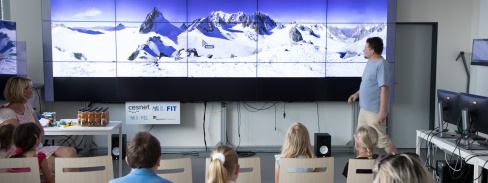SEQRET - Secure and Industrialized Quantum Key Distribution for European Telecom Networks
Acronym: SEQRET
Provider: European Union
Programme: Digital Europe Programme (DIGITAL)
Identification number: 101091591
Implementation period: 01/2023 – 09/2025
Project coordinator: KEEQuant GmbH
Number of partners: 8
CESNET's manager: Dr. Josef Vojtěch
Secure and Industrialized Quantum Key Distribution for European Telecom Networks, “SEQRET”, is a consortium led by KEEQuant and organized along the EU27 quantum supply chain that covers the full scope of the DIGITAL-2021-QCI-01-INDUSTRIAL call. SEQRET will deliver two quantum key distribution (QKD) systems: a highly industrialized QKD system (TRL 8) and a next-gen, QKD system (TRL 7) based on integrated photonics.
Rohde & Schwarz Cybersecurity will integrate the initial prototyping work into their secure product design process in order to ensure a high-quality, volume-manufacturable product. A modular design approach will enable future upgradability towards other types of QKD or even post-quantum cryptography.
SMART Photonics will manufacture quantum-limited photonic integrated circuits for usage in the next-gen system. SMART will optimize parameters such as yield and chip quality in order to enable a high-volume and cost-effective production.
Together with Quant-X Security & Coding, as well as Deutsche Telekom Security, the world’s first QKD certification process according to Common Criteria with an evaluation assurance level EAL4+ will be established. Hereby, QXS is adapting the QKD security proof towards a practical device model, whereas DTS will write a Security Target document, which will serve as the basis for a QKD system evaluation.
Dacoso will formulate a Customer Concept that covers the full device life cycle of a QKD device, allowing for secure shipping, commissioning, maintenance and end-of-life decommissioning.
The experience of the network operators EXATEL, Poznan Supercomputing and Networking Center and CESNET will be used to derive network requirements early on in the project to influence the product design, maximizing the chances for a good product-market-fit.
Finally, the produced QKD systems will be tested in realistic use cases with the networks of our partners to allow for a full cybersecure system integration.




















































